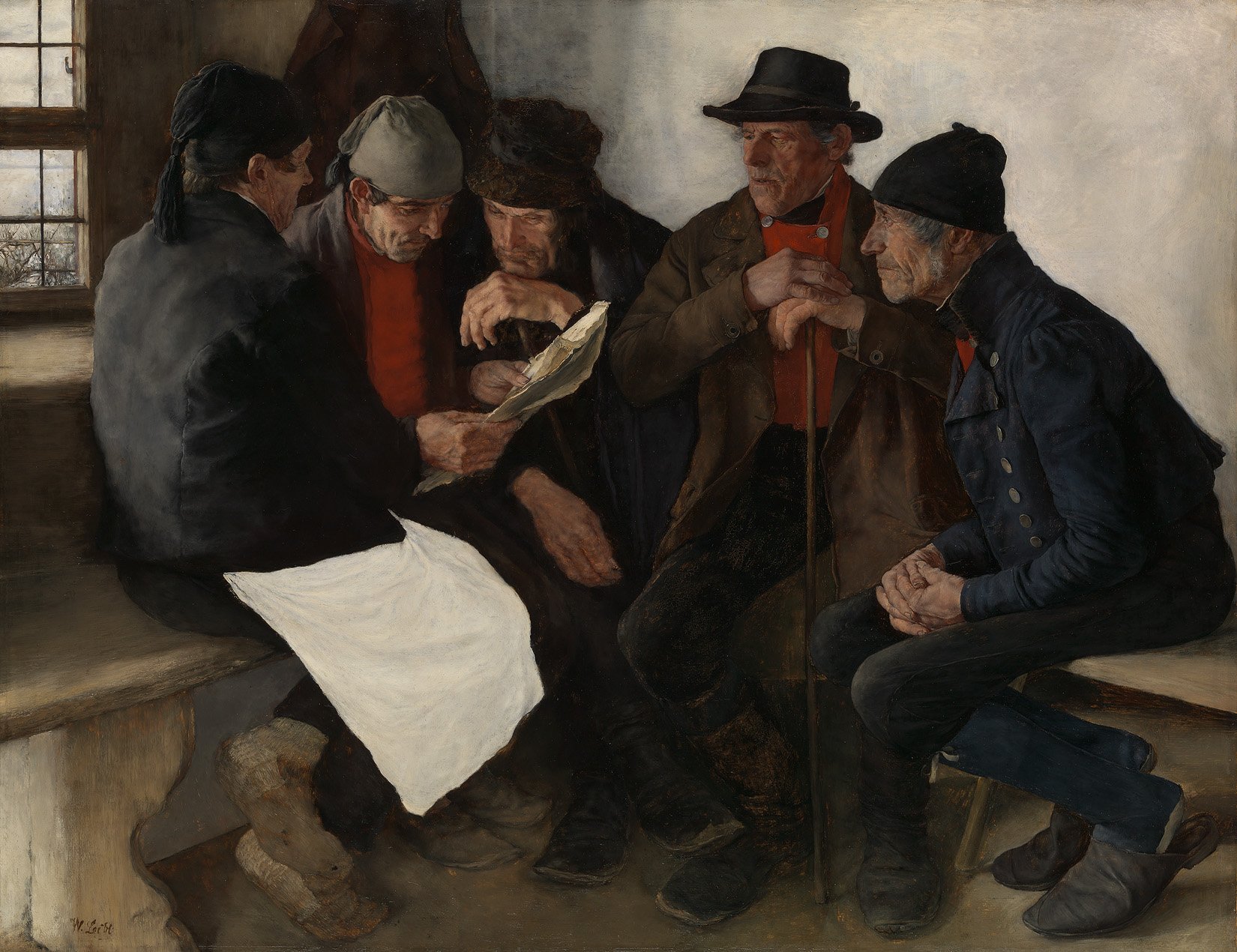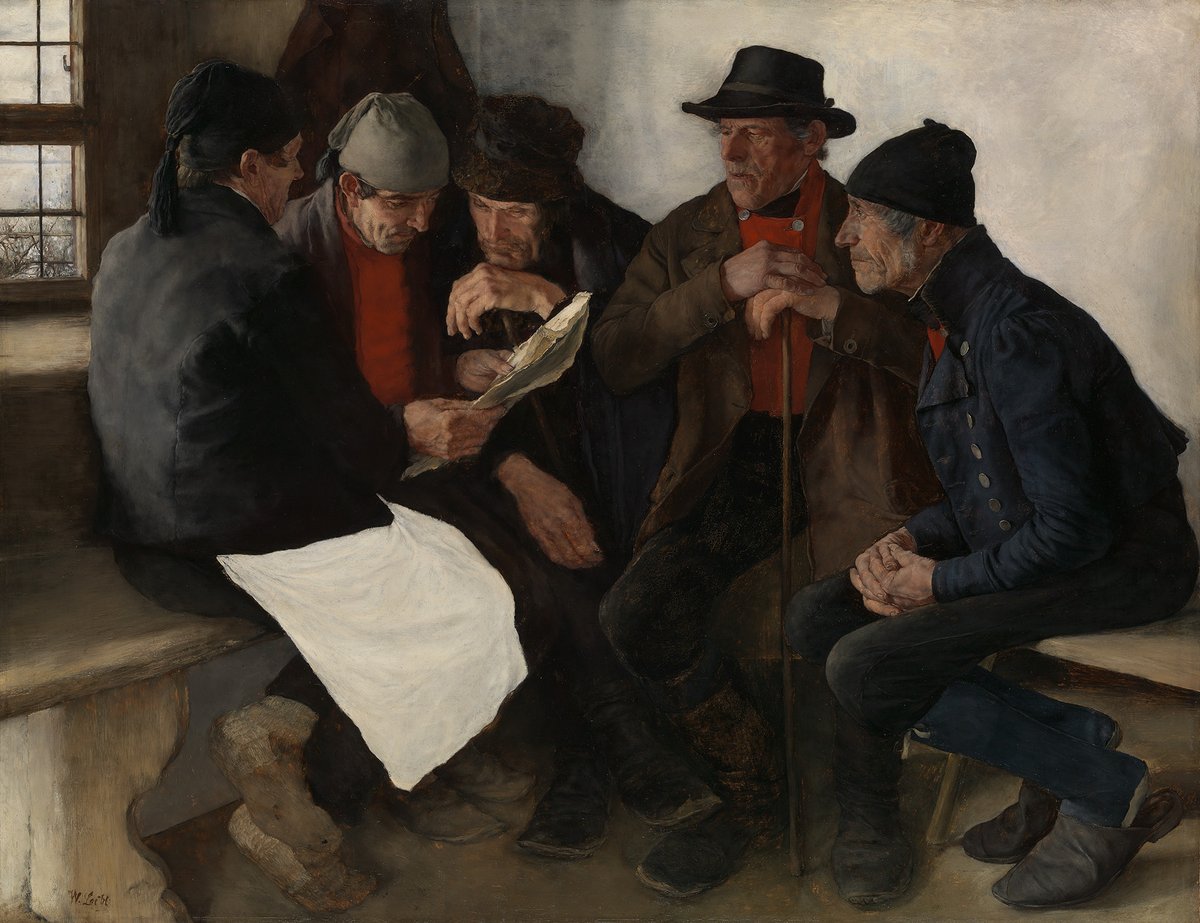Wilhelm Leibl
The Village Politicians, 1877

Wilhelm Leibl
The Village Politicians (Peasants in Conversation), 1877
Kunst Museum Winterthur, Stiftung Oskar Reinhart, Ankauf, 1953
Foto: SIK-ISEA, Zürich (Philipp Hitz)
Wilhelm Leibl had had enough of Munich and the often disparaging criticism of his work by the local art scene, so in 1873 he decided to retreat to the countryside. He lived for several years in a small village on Lake Ammersee. This change of location also changed his style of painting in terms of not only form, but also in terms of content. Whereas he had previously painted only bourgeois people hailing from an urban environment, he now felt he had found a new element in life: «Here in the great outdoors and among the local peasants, one can finally paint naturally». His Village Politicians, on which he worked for more than two years, are typical of this new genre. As a major work from this period of upheaval, this is one of the most important paintings in Leibl's oeuvre and one of the most frequently discussed. It heralded the second, very successful creative phase of his career. Whereas he had previously painted more spontaneously in quite a relaxed style, which had earned him some success in Paris, among other places, he now developed a style that captured every detail in a highly delicate manner. You feel you can almost count every whisker in the beard of these gentlemen and follow every individual wrinkle in their weather-beaten faces. Leibl found inspiration for this kind of detailed painting in the Old Masters, especially Hans Holbein, with whom he was often compared.
In a letter to his mother, he wrote: «My painting shows five farmers huddling together in a small farmhouse parlour, presumably discussing some communal matter, be-cause one of them is holding a piece of paper that looks like an old land-registry map. They are real farmers, and I have painted them as faithfully as possible from life, and the farmhouse parlour is real, too, just like the one I painted the picture in». Leibl wanted to depict reality as «true to life» as possible. He tried to capture even the smallest details both realistically and distinctly. This type of depiction could only be achieved by an extreme close-up view, which is why the figures are also very close to the edge of the painting. This made the artist’s carefully thought-through composition all the more important. He grouped three men on the corner bench on the left around the document, while the other two are placed on the right. Besides, the man on the far right is shown in clear profile. This is obviously a proper portrait and applies not only to him, but also to the other people in the painting and to the hands of the fig¬ures. They, too, are carefully composed, positioned, reproduced in detail and addi¬tionally characterize them.
Leibl's balanced composition is evident not only in the motivic elements, but also in the forms and colours. The bright white cloth on the legs of the figure on the left, seen from behind, stands out particularly. It forms a stark contrast in the otherwise dark centre of the composition. In addition, the shades of red of individual items of clothing create a warm touch and combine harmoniously with the blue and grey shades. Such elements make it clear that Leibl not only carefully chose his subject, but also paid meticulous attention to its execution. Therein also lies the modernity of the painting, which – despite the old-masterly technique and the seemingly conservative subject – makes painting itself the main theme. As Leibl put it: «According to my principle, it is not the ‹what› that matters, but the ‹how›, much to the chagrin of critics, newspaper writers, and the rabble, for whom the ‹what› is the main thing».

Wilhelm Leibl
The Village Politicians (Peasants in Conversation), 1877
Kunst Museum Winterthur, Stiftung Oskar Reinhart, Ankauf, 1953
Foto: SIK-ISEA, Zürich (Philipp Hitz)


